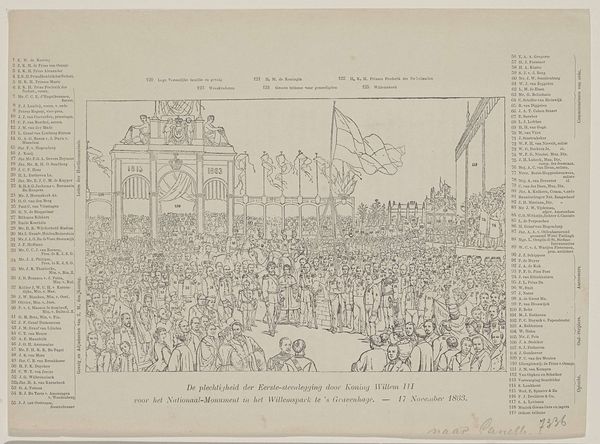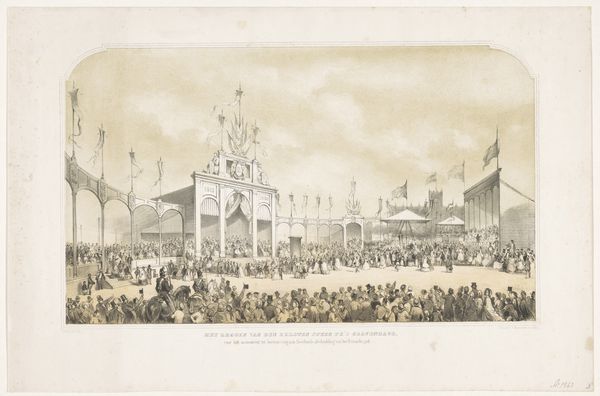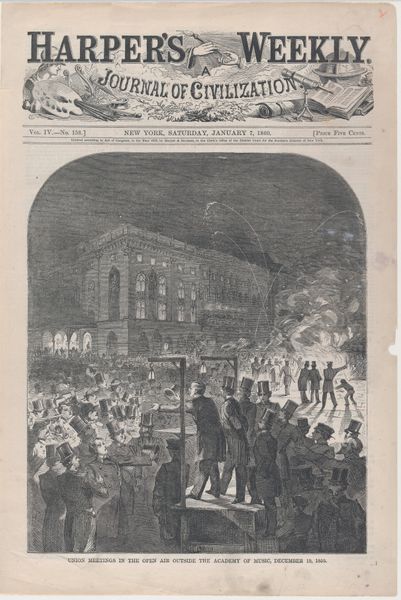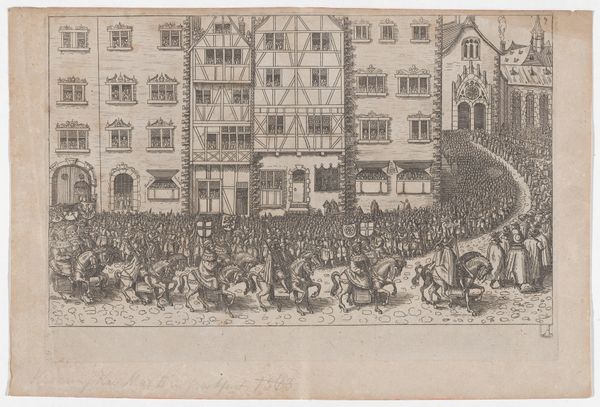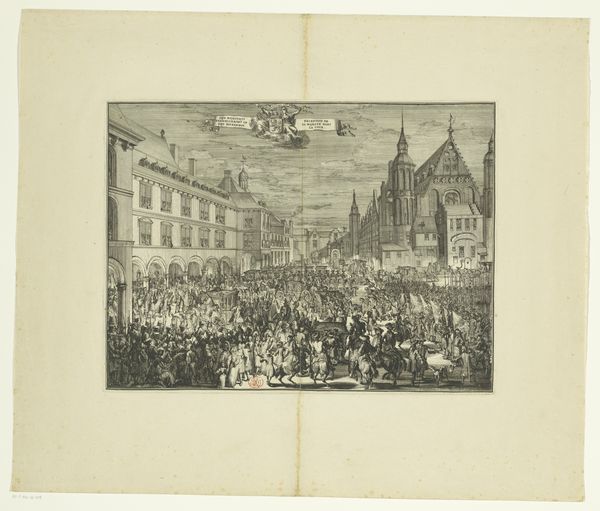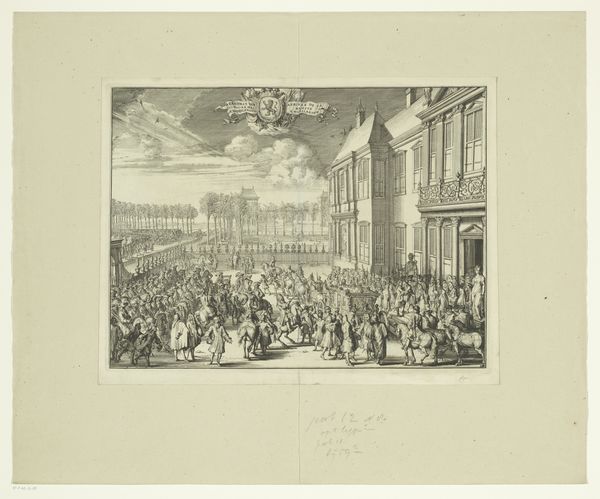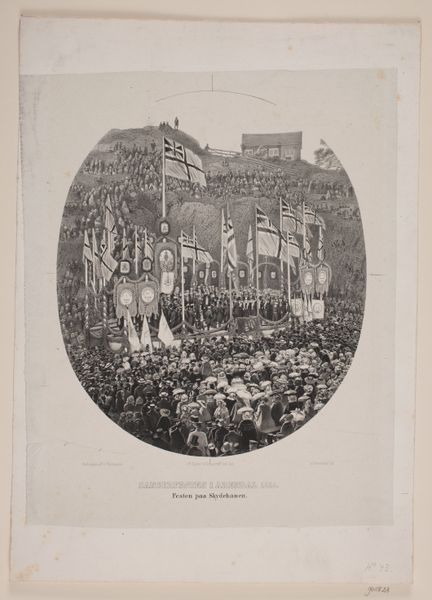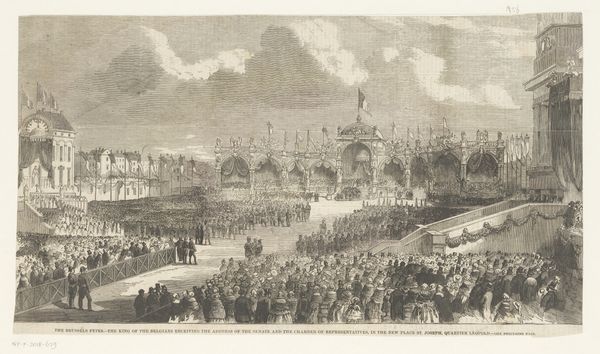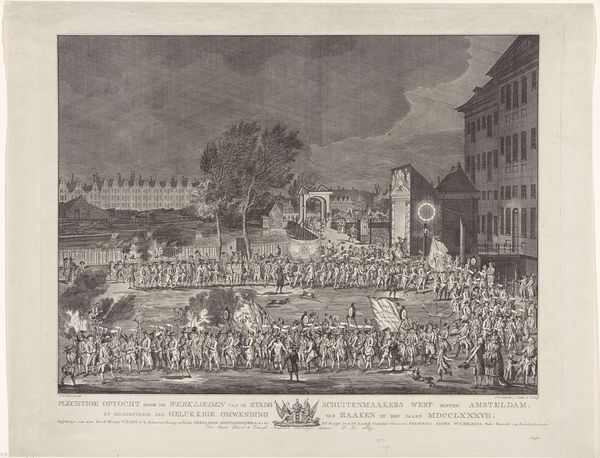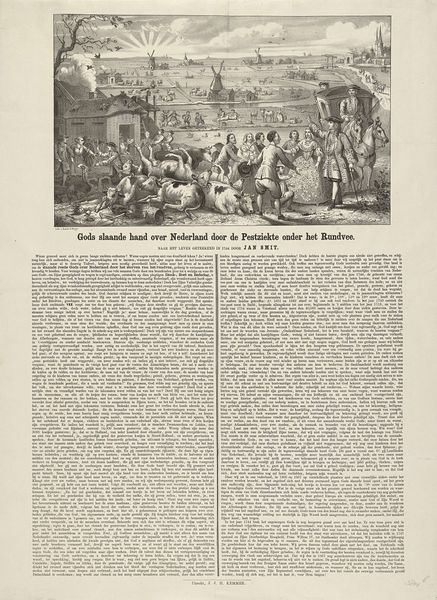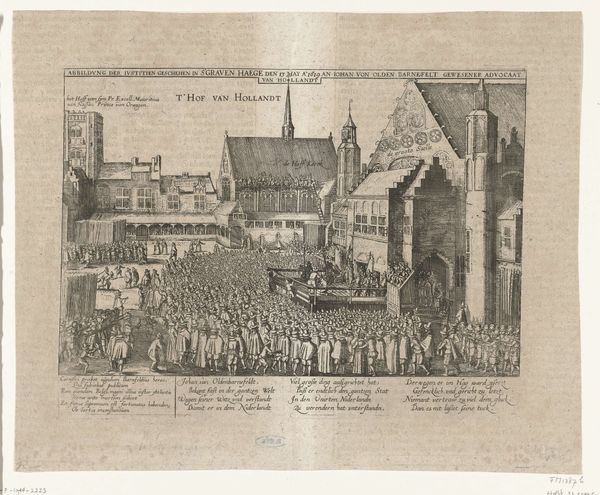
print, engraving
#
narrative-art
#
baroque
# print
#
perspective
#
cityscape
#
history-painting
#
engraving
Dimensions: height 216 mm, width 540 mm, height 389 mm, width 487 mm, height 85 mm, width 68 mm
Copyright: Rijks Museum: Open Domain
Curator: Gaspar Bouttats’ "Antwerpse ommegang van 1685," held in the Rijksmuseum collection, gives us a glimpse into the past, showing the annual Antwerp procession through the city streets. Editor: My first impression? The density of detail! It's teeming with life, but almost oppressively so. What materials were used to produce this? It has a tactile quality, despite being a print. Curator: It's an engraving, a printmaking technique where the artist carves an image into a plate, often copper. This allowed for relatively mass production and wide distribution of the image. We have to think about how the process impacts visibility to many social classes and the access afforded by prints like these. Editor: Exactly, the materiality speaks volumes. Consider the labour involved. Each line meticulously etched, multiplied into countless impressions, all circulating within a burgeoning mercantile culture in the baroque period. What was its immediate impact? Curator: That's where the social context is essential. These processions, traditionally religious in nature, served a vital civic function. They asserted identity, reinforcing power structures of the Catholic church, and demonstrated a community celebrating shared traditions and beliefs amidst times of great religious and political tension in the Spanish Netherlands. Editor: Yes, and this print participates in constructing and distributing that public image. The grand spectacle becomes reproducible, almost consumable. One wonders about the demographics of those viewing it – artisans, merchants, nobility – and what its significance would have meant for each. Was the making of this an individual enterprise or collective? Curator: Given the period and its visual strategies, I'm more curious how women are depicted here—where do we see them within this structure, if at all? And if this work normalizes hierarchical values through grand narratives and symbols, who profits materially from such depictions, and what kind of identities get valued here? Editor: Excellent points, framing the work not just as document but also as a reflection and agent of its social structures. By acknowledging this as both a labour intensive production and as propaganda we gain important context for the power this seemingly simple material holds. Curator: Exactly! Approaching it in tandem allows for that understanding, both its function and place as document but equally as testament. Editor: This close consideration is so important. Approaching this piece through this perspective lets us rethink the history of its circulation.
Comments
No comments
Be the first to comment and join the conversation on the ultimate creative platform.
